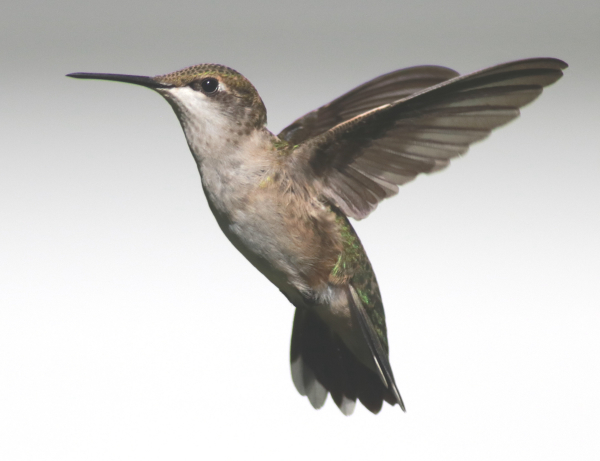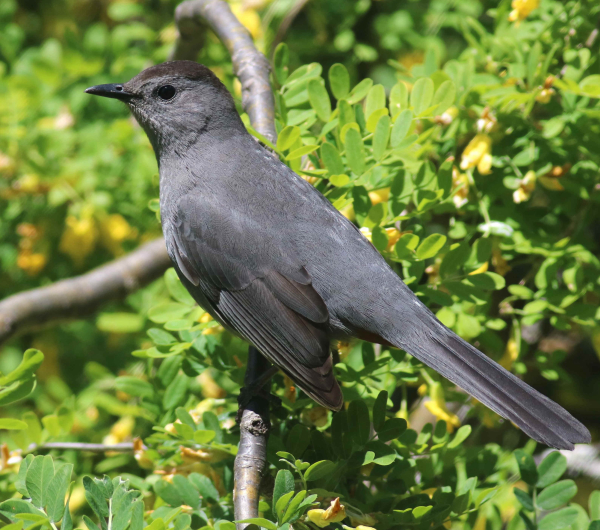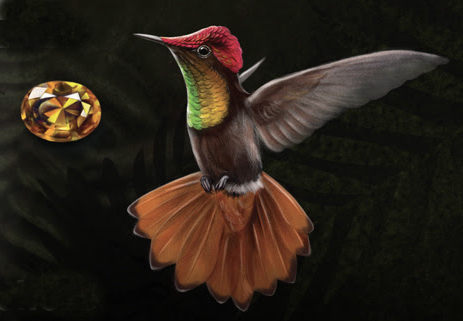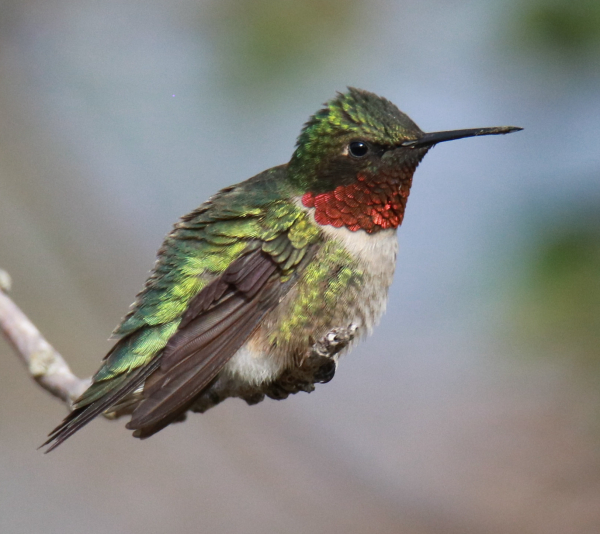Torpor Aids Migrating Hummingbirds

A new study published in eLife describes how Ruby-throated Hummingbirds use the same energy-conserving strategy to survive overnight to accumulate body fat they need to fuel long migrations. The study proves a long-held suspicion among biologists and provides new insights about the processes Ruby-throats’ physiology uses to determine whether to conserve energy or store fat. To conserve energy overnight, the hummingbirds can shift into an energy-saving torpor to reduce their body temperature and slow their metabolism up to 95 percent.
“We wanted to know if hummingbirds use this same energy-saving mechanism to more quickly build the fat stores they use to power their 3,000-mile migrations between their North American nesting range and Central American wintering areas,” explained principal author Erich Eberts, a Ph.D. student at the University of Toronto Scarborough.
To study how and when the hummingbirds deploy this energy-saving strategy, Eberts and the team measured daily changes in the body, fat, and lean masses of 16 Ruby-throated Hummingbirds during 3 periods: 1) The nesting season, 2) late summer when the birds prepare to migrate, and 3) during the birds’ typical migration period. They also measured the hummingbirds’ oxygen consumption using a technique called respirometry to determine when they shifted into torpor.
During the nesting season, the hummingbirds maintained lean body masses and only entered torpor when their fat levels fell below 5 percent of their body mass. This “energy-emergency strategy” was usually deployed on nights when they went to sleep with lower energy reserves.
But during the late summer, when Ruby-throated Hummingbirds typically increase their body mass by 20 percent to sustain themselves during their long migration across the Gulf of Mexico, they stop using the 5 percent threshold for entering torpor. Instead, they enter torpor more frequently and with higher levels of fat. This allows them to conserve energy and build up fat even as nights get progressively longer. “We learned that hummingbirds abandon the energy-emergency strategy during late summer and start using torpor to accumulate the fat stores they need for migration,” Eberts explained.
The authors added that learning more about this energy-saving strategy may be important for the conservation of Ruby-throated Hummingbirds and other migratory bird species that face increasing stress from climate change and habitat loss.
“Our findings that hummingbirds can use torpor to cope with different energy challenges throughout the annual cycle are important for understanding differences in how these and other migratory animals that don’t use torpor might respond to future environmental changes in food availability and temperature,” concluded Kenneth Welch Jr., Associate Professor, Acting Chair of the Department of Biological Sciences at the University of Toronto Scarborough, and co-author of the study alongside Christopher Guglielmo, Professor at the University of Western Ontario.







